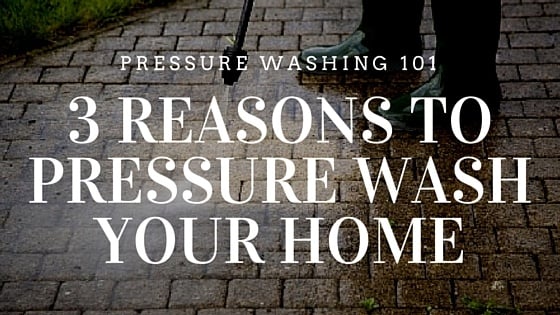“I’ve recently noticed some stains on my exterior walls. Can I safely pressure wash my home’s exterior or do I risk damaging it?”
As surprising as it may seem, this is one of the most common questions we get from people prioritizing their home improvement plans as summer approaches. Whether pressure washing is done to remove dust and dirt, as part of standard maintenance, or to get a building ready for painting, knowing how to power wash walls correctly can help avoid a series of problems, such as water infiltration, excessive erosion leading to accelerated wear and tear, and localized damage.
Pressure Washing Exterior Walls Correctly
 Using a pressure washer isn’t easy. But if you follow our 10-step guide, you’ll be able to pressure wash your home’s exterior effectively and safely.
Using a pressure washer isn’t easy. But if you follow our 10-step guide, you’ll be able to pressure wash your home’s exterior effectively and safely.
- Become familiar with pressure washing equipment: It’s very important to read the instruction manual and test the machine on a small spot before starting the actual job. Since the scouring action of a pressure washer is very strong, you may damage paint, walls, and soft surfaces if you don’t know how to use the unit.
- Adjust the pressure: To wash away cobwebs, dust, and dirt, keep the pressure level between 1500 psi and 1800 psi. To remove loose paint, increase the pressure gradually but don’t go beyond 2500 psi; too much pressure may damage the surface.
- Choose the right nozzle: Wide-fan nozzles are often preferred when pressure washing exterior painted surfaces. While most professionals go for yellow (15-degree) or green (25-degree) fan nozzles, white (40-degree) nozzles can be used to wash windows and black (65-degree) nozzles are best if you intend to combine water with chemicals.
- Prepare the exterior: Use a waterproof caulk to repair cracks and holes. Give the product enough time to dry out before washing the wall. Also, protect exterior lights, switches, and electric outlets to prevent electrocution.
- Divide walls into sections: For even cleaning, divide walls into sections indicated by corners, windows, and downpipes, and wash from the top down, using long strokes.
- Use eco-friendly cleaning products: Choose an eco-friendly, all-purpose product, which will have minimal impact on the environment. Apply the solution to one area, let it soak for five minutes, and then rinse well with the pressure washer before moving on to the next section.
- Hold the wand at a 45-degree angle: To avoid damaging walls, keep the nozzle at a 45-degree angle and spray from a minimum distance of 12 inches. If you increase the pressure, move the nozzle further away from the surface.
- Scrub away persistent dirt: You can use a rotating scrub brush or a sponge along with a mild detergent solution to remove stubborn stains.
- Use chemicals (cautiously!): Adding chemicals may help in certain applications. But according to experts, using pressure washers to apply chemicals to walls may damage both the color and the wall structure. If you intend to use chemicals, make sure they’re pressure washer safe, replace the nozzle with a black one, and adjust the pressure around 50 psi.
- Seal: Allow walls to dry thoroughly and inspect them carefully. If there are any water stains after 24-48 hours, apply a water-repellent product to ensure adequate waterproofing and prevent future moisture problems.
Safety guidelines:
- Never use a pressure washer while standing on a ladder; the high pressure could knock you down;
- Hold the wand in both hands;
- Wear a face shield or safety glasses and a mask to protect your face;
- If you’re cleaning an old house with lead-based paint, contact Florida Department of Health to enquire about the best way to handle lead-contaminated waste.






